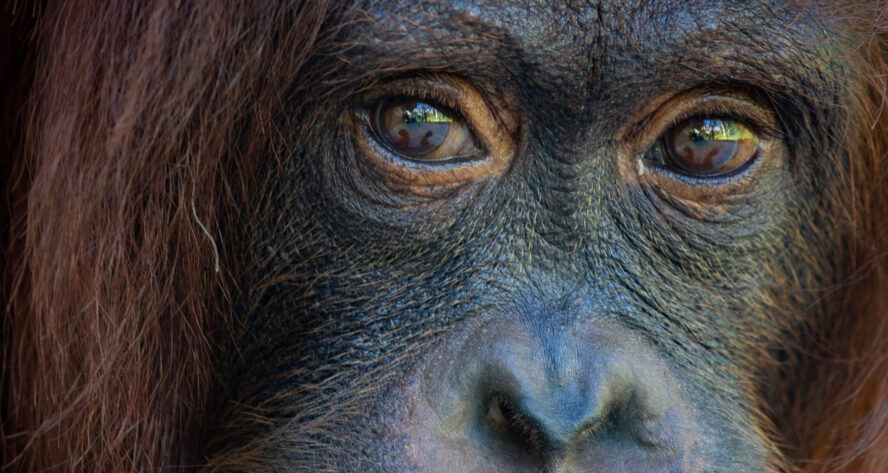

Resources
Where do orangutans live?
Once widespread throughout South-East Asia, orangutans now only inhabit Borneo & Sumatra.
Orangutans are the largest arboreal mammal in the world and live in the canopy of tropical rainforests. Their long limbs, opposable toes and thumbs, and rotating hips enable orangutans to travel through the trees with ease where they spend their days searching for food, safe resting places and sometimes, a mate.

Although sociable, orangutans mostly live solitary lives in the wild, especially males. This is due to food scarcity, population decline and forest fragmentation.
It's rare that an orangutan will venture to the forest floor due to the dangers this could pose to them. Venomous snakes, Sunda clouded leopards, harmful bacteria and humans are just some of the things they want to avoid.

Orangutans sleep in the trees. Due to their size and weight they must build a comfortable but strong nest each night to keep them safe.
First they'll find a tree with sturdy branches to form a stable base. Then, they'll fold smaller, leafy branches on top of each other to create a soft mat to lie on. Some orangutans have even been known to make pillows out of foliage. A good night's sleep is vital for orangutans who spend hours at a time supporting their heavy bodies high in the trees.

The height of the forest canopy offers orangutans safety by camouflaging them. The hue of their hair resembles a reddish-orange shade, akin to the warm and radiant tones of the sun that penetrate the rainforest's canopy. This clever adaptation aids in concealing them as the light gradually permeates the rainforest floor making them almost invisible when looking up.
As a result of deforestation, orangutan populations have been divided. Without the safety of dense forest cover of trees to move through they become isolated to one area, cut off from other individuals.

Oil palm plantations are just one example of how the cleared land is used for agriculture. Whilst no form of monoculture can support orangutans entirely, research shows that they can adapt to them. As a result, new initiatives designed to encourage the safe passage of animals through these landscapes are being implemented.
These wildlife corridors can help to keep populations connected and ensuring a wider gene pool and a brighter future.

Explore more articles
![Orangutan eyes close up]()
Resources
Why orangutans need our help
Bornean orangutans are critically endangered, facing multiple threats in the wild.
![Home page wheelbarrow]()
Resources
Five ways you can help orangutans
By making small changes you can have a big impact on orangutan conservation!
![Photo of female orangutan]()
Resources
Orangutan facts
Orangutans are one of our closest relatives in the animal kingdom sharing almost 97% DNA!


